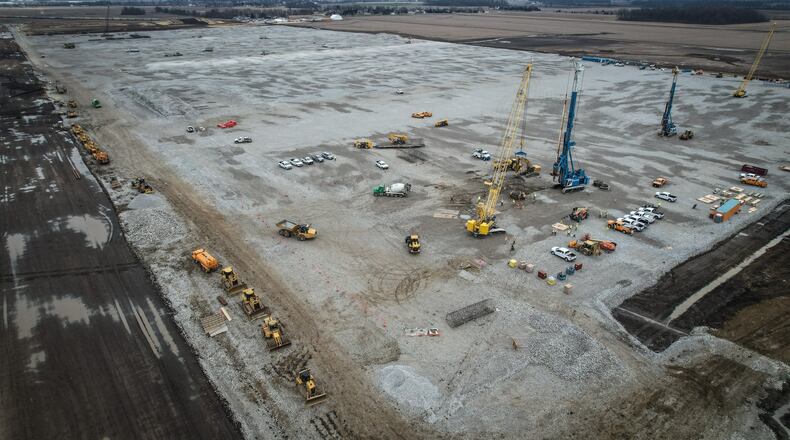“If you can’t supply the talent, (EV businesses) are not going to locate in your community,” Husted said.
The initial numbers are daunting. In Western Ohio — a region that includes Montgomery, Miami, Greene and Clark counties — about 5,000 EV-sector jobs are expected, the report says.
Western Ohio accounts for 21% of overall Ohio EV workforce demand, the report said, with most job growth anticipated in producing EVs and their batteries.
This is driven by the two largest EV investments in the region — Honda’s $237M battery retooling in Anna and SEMCORP’s $916M new EV facility.
Honda’s joint venture battery production site with LG Energy Solution is also being built now near Jeffersonville.
“The bulk of talent demand will be for manufacturing roles, such as engineers, equipment technicians and credentialed operators,” the report said of Western Ohio’s expected needs.
In Southwest Ohio — which includes Warren County — the state expects 7% of overall Ohio EV workforce demand, with a strong demand for electrician and electrician technicians. Some 1,600 new jobs are expected there.
Meeting the demand will require educators to be on board, students and workers to understand the opportunities and government standing ready to assist or get out of the way.
“We need to have all hands on deck,” Husted said. “This is all going on when we have the lowest unemployment rate in our state’s history.”
Credit: JIM NOELKER
Credit: JIM NOELKER
Perhaps one underappreciated facet of EV production is that it requires fewer workers compared to the manufacture of internal combustion engine (ICE) automobiles. Ford CEO Jim Farley has said the labor cost of EV production is about 40% lower than a traditional ICE car.
But Husted said the report’s data comes from industry itself.
“This is what the industry told us,” Husted said. Some workers will transition out of the ICE workforce, either to retirement or to another field, he said.
“There may be fewer jobs in one sector and more in another, But the aggregate with all that’s happening in advanced manufacturing is expected to grow — according to the industry,” he added.
In the end, these are skills required not just by EV and battery producers, but by the semi-conductor and cloud computing industry, and by the military, he said.
Said Husted: “The Air Force is going to need these skills.”
Globally, there are more than 20 million passenger EVs on the road and electrification is spreading rapidly to other segments of transport, the report says. Adoption is projected to accelerate over the next decade by 80%, it also says.
Today, are more than 1.4 million EVs in the United States.
“Today, the automobile industry faces new opportunities and challenges brought by the transition to EVs,” said Ryan Augsburger, Ohio Manufacturing Association. “Not since the implementation of the assembly line has America’s auto industry faced so much change so quickly.”
“We have a plan, and now it’s time to execute it,” Husted said Wednesday.
About the Author


